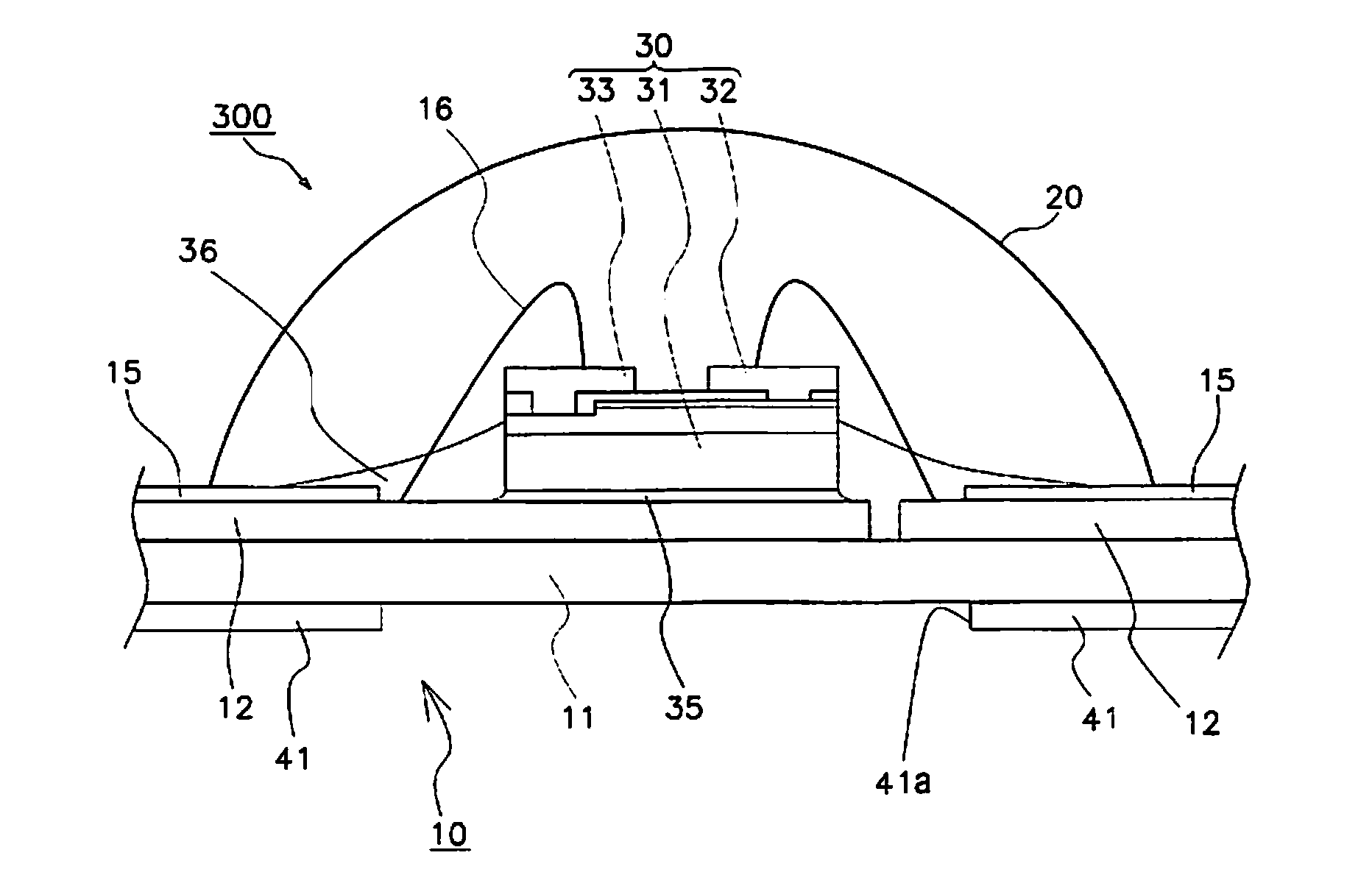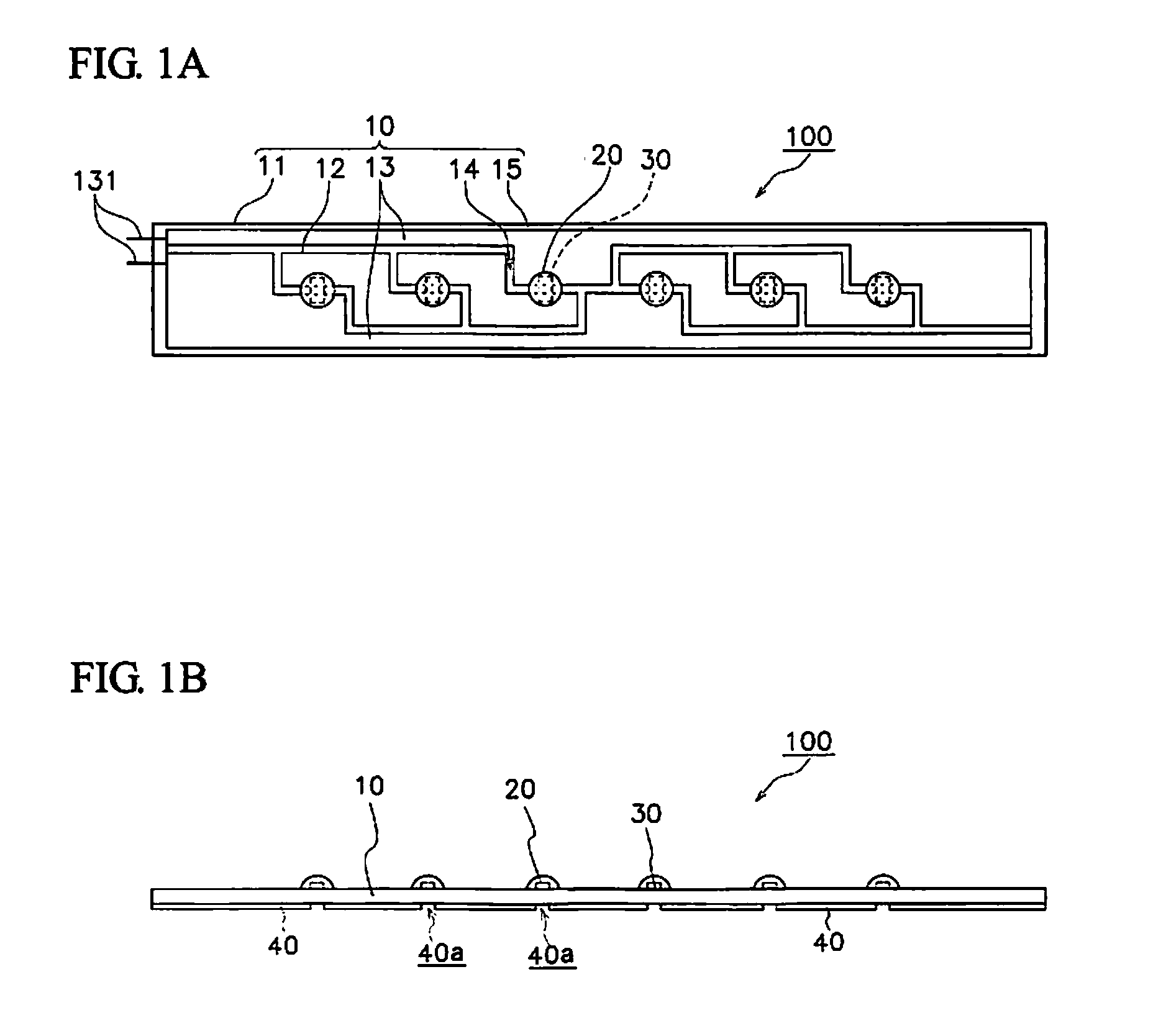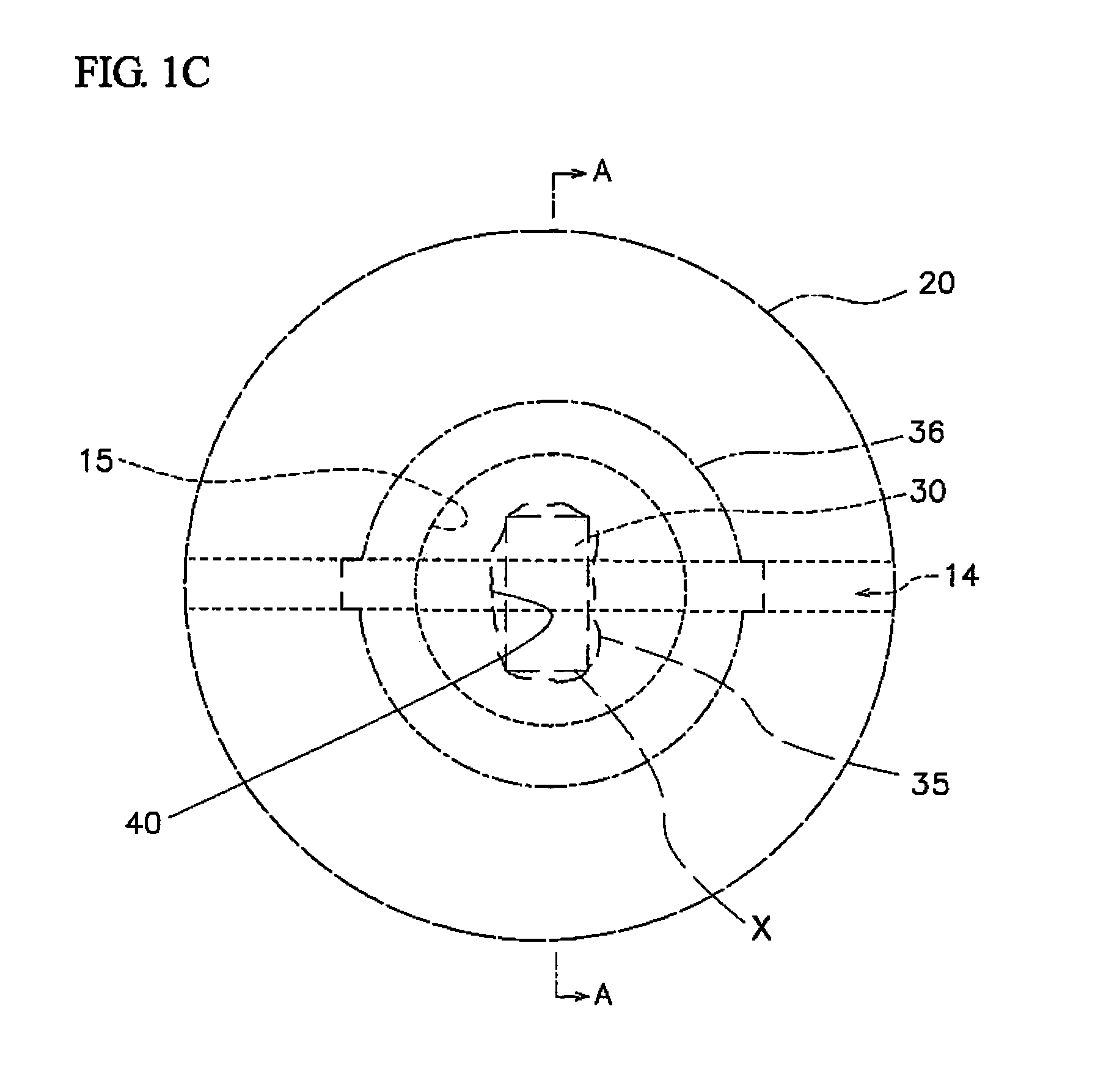Light emitting device
a technology of light emitting elements and light sources, which is applied in the direction of semiconductor devices for light sources, lighting and heating apparatus, and light support devices, etc., can solve the problems of detachment of the light emitting element from the flexible substrate, and deterioration of the light emitting element itself, so as to achieve the effect of minimizing the stress on the light emitting elemen
- Summary
- Abstract
- Description
- Claims
- Application Information
AI Technical Summary
Benefits of technology
Problems solved by technology
Method used
Image
Examples
embodiment 1
[0056]The light emitting device 100 according to Embodiment 1 includes, as shown in FIG. 1A to FIG. 1D, the flexible substrate 10, the light emitting elements 30 arranged on the surface of the flexible substrate 10, the sealing resin members 20 which are disposed on the flexible substrate 10 and cover the respective light emitting elements 30, and the adhesion layer 40. The flexible substrate 10 has a stacked layer structure made up of a flexible base member 11 made of a polyimide (about 25 μm thickness), wiring portions 12 (about 35 μm thickness) arranged on one surface of the base member 11 and spaced apart from each other by a groove portion 14, and an insulating reflective layer 15 (about 15 μm thickness and made of a silicone-system resin containing titanium oxide) disposed over them. In the flexible substrate 10, in order to establish electrical connection with the light emitting elements 30, a grove portion 14 formed between the wiring portions 12 and the wiring portions 12 a...
embodiment 2
[0065]The light emitting device 200 according to Embodiment 2 has a substantially similar structure as that of the light emitting device 100 except that, for example, as a structure shown in FIG. 2, the structure includes on the back surface of the flexible substrate 10, the separation layer 50 made of silicone is formed in the through holes 40a of the adhesion layer. The separation layer 50 is formed with a thickness approximately similar to the thickness of the adhesion layer 40.
[0066]Such a separation layer portions 50 are disposed, for example, such that a mask having openings in regions correspond to the regions X described above is prepared and placed on the back surface of the flexible substrate 10 so that the openings of the mask are aligned correspond to the regions X. Next, using the mask, by way of coating, the separation layer portions are formed on the back surface of the flexible substrate 10 at locations corresponding to the regions X. Then, the adhesion layer 40 is c...
embodiment 3
[0070]The light emitting device 300 according to Embodiment 3 has a substantially similar structure as that of the light emitting device 100 except that, as a structure shown in FIG. 3, each of the light emitting elements 30 is mounted on the wiring portions 12 of the flexible substrate 10 in a face-up manner, the n-side electrode and the p-side electrode 32 are respectively electrically connected to the corresponding wiring portions 12 via respective wires 16. Thus, on the flexible substrate 10, the region where the wiring portions 12 being exposed from the reflective layer 15 is somewhat increased, the connection regions of the wires 16 and the wiring portions 12 are also included in the corresponding region on the backside surface of the flexible substrate 10 in the similar manner as in the regions where the light emitting elements are arranged, and accordingly, the size of the through holes 41a of the adhesion layer 41 of the flexible substrate 10 are increased. That is, the adh...
PUM
 Login to View More
Login to View More Abstract
Description
Claims
Application Information
 Login to View More
Login to View More - R&D
- Intellectual Property
- Life Sciences
- Materials
- Tech Scout
- Unparalleled Data Quality
- Higher Quality Content
- 60% Fewer Hallucinations
Browse by: Latest US Patents, China's latest patents, Technical Efficacy Thesaurus, Application Domain, Technology Topic, Popular Technical Reports.
© 2025 PatSnap. All rights reserved.Legal|Privacy policy|Modern Slavery Act Transparency Statement|Sitemap|About US| Contact US: help@patsnap.com



